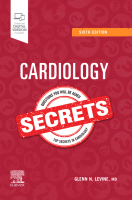Physical Address
304 North Cardinal St.
Dorchester Center, MA 02124

1 What is hypercoagulability? Hypercoagulability is a state of increased risk for thrombosis; it is also commonly called “thrombophilia.” Increased risk may dispose to venous, arterial, and microvascular thrombosis, and thrombosis risk is measured (and usually different) for both initial…

1 Who first described pulmonary embolism? Pulmonary embolism (PE) was probably first reported in the early 1800s clinically, but Rudolf Virchow elucidated the mechanism by describing the connection between venous thrombosis and PE in the late 1800s. He also coined…

1 What three primary factors promote venous thromboembolic (VTE) disease? Development of venous thrombosis is promoted by the following ( Virchow’s Triad ): Venous blood stasis. Injury to the intimal layer of the venous vasculature. Abnormalities in coagulation or fibrinolysis.…

1 What are the three basic causes of stroke? The most common basic causes of stroke are ischemic stroke and hemorrhagic stroke. Less commonly, cerebral venous sinus thrombosis (CVST) can also lead to stroke. Ischemic stroke can be due to…

1 What is a stroke? Stroke is a focal disturbance of blood flow into or out of the brain, classified primarily as ischemic (87%) or hemorrhagic (13%). Stroke is not a single disease, rather the end result of many different…

1 Describe extracranial carotid artery anatomy. What are the common causes of carotid artery disease? The carotid arteries originate as the common carotid artery (CCA) from the brachiocephalic trunk on the right side and from the aortic arch on the…

1 What is the definition of an aortic dissection? The classic feature of aortic dissection is a tear in the intimal wall with subsequent subintimal hematoma formation, which can then propagate proximally and/or distally. However, it is now recognized that…

1 What are the common pathologies affecting the thoracic aorta? Aneurysm and dissection are the most common pathologies affecting the thoracic aorta. The incidence of aneurysm is probably underestimated. A Swedish population study demonstrated incidence of 16.3 per 100,000 per…

1 What are the key components of the vascular physical examination? According to the American College of Cardiology/American Heart Association (ACC/AHA) guidelines on peripheral arterial disease (PAD), the key components of the vascular physical examination include the following: Blood pressure…

1 How much sleep is typically needed? The American Academy of Sleep Medicine Consensus statement recommends 7 or more hours of sleep regularly for optimal health including cardiovascular health. Sleeping 7 or less hours of sleep is associated with an…